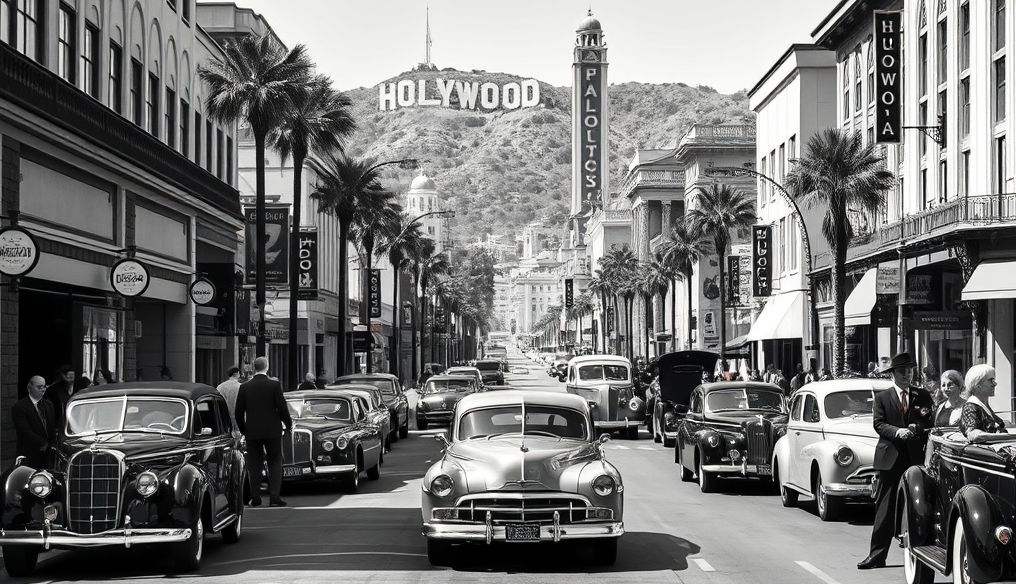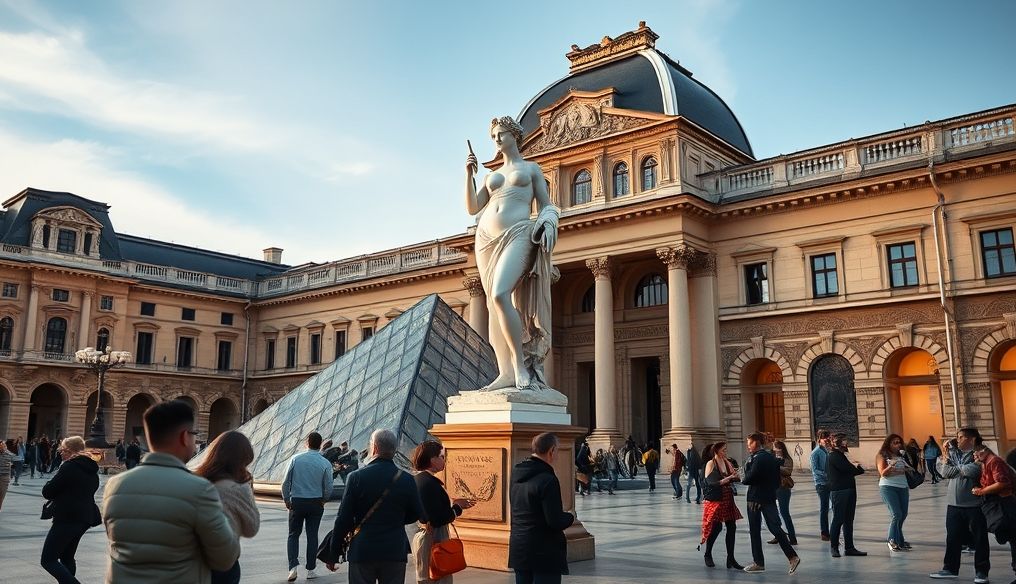How Did Hollywood Transform From Farmland to the Global Cinema Capital?
Hollywood, the name that resonates throughout the world of cinema, is synonymous with lights, fame, and blockbuster movies. But how did this giant industry begin? Hollywood's journey from a quiet agricultural land to the world's center of cinematic creation is a fascinating story of innovation, adventure, and opportunity.
Chapter 1: Humble Beginnings - Before the Lights and Fame
In the late 19th century, Hollywood was just a small town located in Los Angeles County, California. The area was known for its citrus groves and fruit farms. No one imagined that this rural area would one day become the center of the global entertainment industry.
Why California?
Several factors contributed to the choice of California as the location for the nascent film industry:
- Climate: California enjoys a mild and sunny climate year-round, allowing for outdoor filming most days of the year.
- Geographical Diversity: California offers diverse landscapes, from sandy beaches to towering mountains and arid deserts, making it an ideal location for filming a wide range of movies.
- Cheap Land: Land in California was much cheaper compared to major cities in the East, making it attractive to emerging production companies.
- Escape from Edison: Thomas Edison owned key patents for cinema technologies and was pursuing independent production companies in the East. These companies found refuge in California, beyond Edison's reach.
Chapter 2: The Early Pioneers - The Film Industry Takes Off
In the early 20th century, film production companies began moving to Hollywood. These companies were small and independent, but they were full of ambition and creativity.
The First Film in Hollywood
The film "The Count of Monte Cristo" (1908) is considered the first feature film to be filmed entirely in Hollywood. This film was a turning point in the history of cinema in Hollywood.
Influential Figures
Among the influential figures in the early film industry in Hollywood:
- D.W. Griffith: A pioneering director who invented many modern cinematic techniques, such as close-ups and parallel editing.
- Mack Sennett: A producer and director specializing in silent comedies, he was famous for producing "Keystone Cops" films.
- Carl Laemmle: The founder of Universal Pictures, he was one of the first producers to recognize the importance of stars in attracting audiences.
Chapter 3: The Era of Silent Films - Stars Are Born
The period of silent films (from the beginning of the 20th century to the late 1920s) witnessed a great boom in the film industry in Hollywood. Hollywood became a center for stars, directors, and creators from all over the world.
Rising Stars
Many stars emerged during this period who became legends in the world of cinema, such as:
- Charlie Chaplin: An English actor and comedian, famous for his "Tramp" character and his silent comedies.
- Mary Pickford: A Canadian actress, known for her beauty and talent, and became known as "America's Sweetheart."
- Rudolph Valentino: An Italian actor, known for his handsomeness and charm, and became a symbol of romance in silent cinema.
Development of Cinematic Techniques
This period witnessed significant developments in cinematic techniques, such as:
- Lighting: New lighting techniques were developed, allowing for more realistic and dramatic scenes to be filmed.
- Editing: Editing techniques were developed, allowing stories to be told in a more creative and suspenseful way.
- Set Design: Set design was developed, allowing for the creation of more detailed and realistic worlds and characters.
Chapter 4: The Emergence of Talking Films - A Revolution in the World of Cinema
In 1927, the film "The Jazz Singer" was released, the first long talking film. This film was a revolution in the world of cinema and changed the way films were made forever.
Challenges and Opportunities
The film industry in Hollywood faced many challenges with the emergence of talking films, such as:
- New Technology: Production companies had to invest in new equipment to record and edit sound.
- Actors: Actors had to learn how to speak clearly in front of the camera.
- Writing: Writers had to write compelling and natural dialogues.
However, talking films also opened up many new opportunities, such as:
- More Complex Stories: Films became able to tell more complex and in-depth stories.
- More Realistic Characters: Characters became more realistic and believable.
- New Genres of Films: New genres of films emerged, such as musicals and talking comedies.
Chapter 5: The Golden Age of Hollywood - The Pinnacle of Creativity and Stardom
The period from the 1930s to the 1950s is considered the Golden Age of Hollywood. During this period, Hollywood produced some of the greatest films in the history of cinema.
Timeless Films
Among the timeless films produced during the Golden Age of Hollywood:
- "Gone with the Wind" (1939)
- "Casablanca" (1942)
- "Citizen Kane" (1941)
- "The Wizard of Oz" (1939)
- "Singin' in the Rain" (1952)
Legendary Stars
Many legendary stars emerged during this period, such as:
- Humphrey Bogart: An American actor, known for his roles in dramas and crime films.
- Marilyn Monroe: An American actress, known for her beauty and charm, and became a symbol of seduction in cinema.
- James Stewart: An American actor, known for his roles in comedies and dramas.
- Katharine Hepburn: An American actress, known for her talent and independence, and won four Academy Awards.
Chapter 6: New Challenges - Television and Global Competition
In the 1950s, the film industry in Hollywood began to face new challenges, such as the emergence of television and competition from film industries in other countries.
Television Changes the Scene
Television became a popular form of entertainment in homes, leading to a decrease in the number of viewers in cinemas. Hollywood tried to face this challenge by producing more massive and colorful films, and using new technologies such as CinemaScope.
International Competition
Film industries in other countries, such as Italy, France, and Japan, began producing high-quality films, increasing competition for Hollywood.
Chapter 7: Modern Hollywood - Technology and Mass Production
Hollywood has undergone significant transformations in recent decades, with the emergence of digital technology and the mass production of films.
Digital Technology
Digital technology has revolutionized the film industry, allowing films to be shot, edited, and distributed in new and more efficient ways. Visual effects have become more realistic and complex, and it has become possible to produce films with huge budgets.
Mass Production
Hollywood has increasingly focused on producing massive films that target a global audience. These films are often based on comic books or video games and feature huge budgets and stunning visual effects.
Chapter 8: The Future of Hollywood - Challenges and Opportunities
Hollywood today faces many challenges, such as rising production costs, changing audience tastes, and competition from online streaming services. However, Hollywood remains a center of global cinematic creation and has the ability to adapt to changes and continue producing great films.
Challenges
- Rising Production Costs: The costs of producing massive films have become extremely expensive, making it difficult for small production companies to compete.
- Changing Audience Tastes: The audience has become more selective and is looking for original and innovative films.
- Online Streaming Services: Online streaming services, such as Netflix and Amazon Prime Video, have become a strong competitor to cinemas.
Opportunities
- New Technology: New technology provides opportunities to produce more creative and innovative films.
- Global Markets: Global markets open up new opportunities for production companies to distribute their films.
- Diverse Stories: There is a growing demand for diverse stories that reflect different experiences.
In conclusion, Hollywood's journey from farmland to the global cinema capital is an inspiring story of creativity, adventure, and opportunity. Despite the challenges Hollywood faces today, it remains a center of global cinematic creation and has the ability to adapt to changes and continue producing great films for generations to come.




